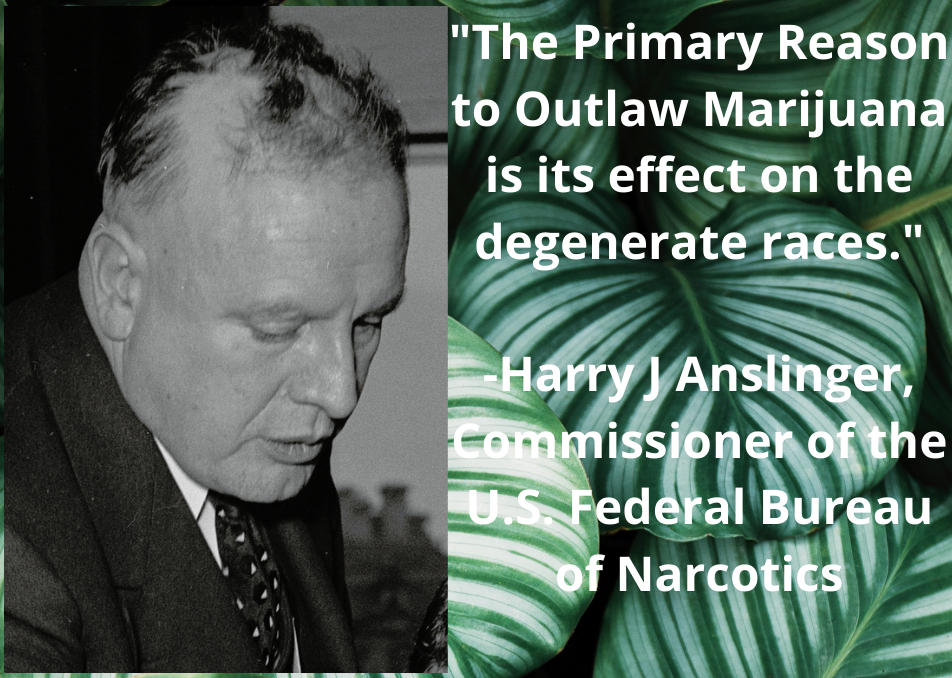
By J Gordon Curtis
The narrative shaping the opinion of the public was explicitly outlined in 1996 by John Ehrlichman. Ehrlichman was a former top aid to Nixon who interviewed with Harper’s Magazine, Perhaps, due to his own notable public scrutiny and conviction, he dropped his façade.
Having little left to protect, he responded with the following to interviewer Dan Baum:
The Nixon campaign in 1968, and the Nixon White House after that, had two enemies: the antiwar left and black people. You understand what I’m saying? We knew we couldn’t make it illegal to be either against the war or black, but by getting the public to associate the hippies with marijuana and blacks with heroin, and then criminalizing both heavily, we could disrupt those communities.
We could arrest their leaders, raid their homes, break up their meetings, and vilify them night after night on the evening news.
Did we know we were lying about the drugs? Of course we did.
The casual attitude Ehrlichman had towards this information was chilling. Baum added after this quote “I must have looked shocked. Ehrlichman just shrugged. Then he looked at his watch, handed me a signed copy of his steamy spy novel … and led me to the door.”
The foundation of the War on Drugs rests firmly on decades worth of lies perpetuated in the media. This period in history is reliant on decades of propaganda preceding it.
The Early Years
Throughout history, the media has assisted the government in pushing this agenda on the public. As we dive through stories related to cannabis, we can note a few different phases in the media. The 1900’s-1930’s era represents blatant, unadulterated propaganda.
From the beginning, the media has maintained a major role in perpetuating the falsehoods of the plant. A recent survey entitled “Racism and Its Effect on Cannabis Research,” points to this by discussing William Randolph Hurst. A media mogul with an empire that would “dwarf current media companies,” Hurst wielded his pen for his own agenda:
In 1923, a Hearst paper reported that “Marihuana is a short cut to the insane asylum. Smoke marihuana cigarettes for a month and what was once your brain will be nothing but a storehouse for horrid specters.” In 1928, a Hearst paper reported that “marijuana was known in India as the ‘murder drug,’ it was common for a man to ‘catch up a knife and run through the streets, hacking and killing every one he [encountered].’” In one of the most bizarre claims, the article claimed one could grow enough cannabis in a window box to “drive the whole population of the United States stark, raving mad.”
Hurst would find comfort in his friendship with Harry Anslinger, the first director of the Federal Bureau of Narcotics. This agency (a predecessor to the DEA was a veritable propaganda mill. Between these two men exists a number of racist quotes that are nearly beyond counting. They both seemed mostly concerned with Marijuana causing their white children to have sex with people of other races.
Let’s turn our attention now to the New York Times. In 1876, they published an article entitled
“Fifty-Six Years an Invalid” In it, they detailed a woman who found relief from her many ailments through the use of cannabis. Fast forward to 1927, the below article appeared in the same publication:

Now, we’re not saying that this didn’t happen. Maybe an unnamed Hispanic family of five really did find themselves without food. Maybe, in desperation, they picked a bunch of unknown plants and leaves from their garden. One of which, was maybe even cannabis which, after consuming, drove them permanently insane. Still, it seems excessively unlikely.
The ’40s brought with it a shift in the media. After this time, they began to focus mostly on the seizure of marijuana and the successes of law enforcement. This carries on until the ’60s–honestly, this mostly continues even to this day.
Leading up to the war on drugs
Representing a minor shift in public attitude, the truth begins to permeate into the media in the ’60s but it’s peppered in with more of the same lies. In 1968, the New York Times published a report claiming of THC that it:
…caused psychotic episodes, such as delusions, in every subject when the dose was high enough. At milder doses, there were varying degrees of euphoria and distortions. One man took a trip to Egypt, where he happily observed dancing girls
Talk about some gas. This dude smoked enough weed to visit Egypt and watch women dance?
This article relies entirely on a scientific research report. Meaning it’s based on a review of the — mostly anecdotal — “evidence” of the previous years. Previous years, the reader may recall, were reliant on blatant disinformation and scare stories. They went all the way back and even found an unidentified man who claimed that he “went to Egypt” on marijuana.
A year later the New York Times Magazine published another article advocating for the harmlessness of Marijuana. The article found its basis in a study (of, admittedly, questionable legality) conducted on volunteers. Actual research, in other words, pointed towards the truth.
But these types of articles were rare and often hidden deep in an issue of the paper or magazine.
Reclamation of the plant
The brainwashing against cannabis was so stupendous even by 1984 when Jack Herer wrote his pro-hemp book The Emperor Wears no Clothes. Back then, many considered it absurd and far-fetched. Others found it groundbreaking and futuristic. Both were wrong.
Much of the focus of the book is on the need for replacements for petroleum and tree-based products. While this may seem innovative, the book was largely stating things that were common knowledge a few years prior. Decades or even centuries of uses were targets of the misinformation campaign against cannabis.
That’s how close the government came to winning. This collective knowledge that we had clawed out of the earth over the years of being a species was almost erased. Still today, people are buying into the lies that were being told a century ago. For every William Randolph Hurst, the plant needs a Jack Herer.
Somewhere in the last decade or so, the pro-cannabis movement has gained footing. This has happened as over 30 states have legalized medical or recreational use. With the advent of the internet, the voices of the public can proclaim loudly over the propaganda put forward by the media.
The media has (mostly) lost the ability to publish scare stories without evidence of an actual occurrence. They pop up now and then (like the B.S. stories of Halloween candy having drugs in them.) The scars of years of misinformation remain on our society. Many are still living in the shadow of a doubt cast over a plant that could potentially change their lives. Athletes are getting kicked out of the Olympics for smoking a plant that was an ally to our ancestors.
It is time to reclaim that plant. This begins with you and I standing up and refusing to accept the propaganda that the media still tries to feed to us to this day about cannabis.
Visit Our Dispensaries
Latest Post

Is Delta-8 Legal In Nashville, TN?
Delta-8 is a hot topic right now, but with so much information out there, it can be hard to know what to believe. That’s why we’re here to help! In this blog post, we’ll cover everything you need to know about Delta-8, from what it is to how it works to where you can buy it.

